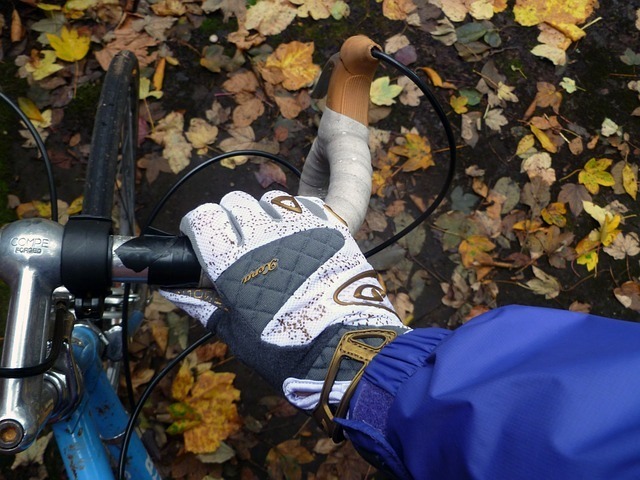Hand numbness when cycling can put a real damper on your ride. Not only is it a nuisance, but it also affects your ability to shift gears quickly. Hand numbness is caused by compression of the nerves in your hands and wrists. It usually begins with a tingling sensation and can progress to complete (though short-lived) numbness.
Without correcting the problem, you can develop cyclist’s palsy or ulnar neuropathy. This correctable problem is simply an exacerbation of the nerve compression to the point that the feeling and full function of the wrist and hand requires some time to return.
Hand numbness generally occurs when the wrist is bent, causing a pinch in the ulnar nerve. The ulnar nerve runs through the bottom of the wrist to the ring finger and pinky. You may feel the tingling and numbness begin in the ring finger and pinky and move up towards the wrist.
Initially, you can probably make the sensation go away by shaking your hands a bit and stretching your wrists. However, the numbness will quickly return unless you solve the nerve compression problem.
Sustained pressure on the wrists and hands is the real culprit here. Whether riding on a road bike or a mountain bike, your position on the bike results in pressure against the hands. You can prevent hand numbness, sometimes, with a change in seating position. If you lean too far forward, consider adjusting your saddle. This will result in a slight change in the way your weight is distributed and can reduce the weight on your hands.
If your hand position is too far flexed, with the wrists bent and the hands extended upwards, you are going to be more prone to tingling and numbness in the hands. Make sure that you ride with just a slight angle in the wrists.
Solving Hand Numbness When Cycling
Here’s where it becomes a bit complicated. There are a few potential fixes you can consider to solve your hand numbness when cycling issue. The ultimate fix may be any one, or a combination of these fixes, based on your particular issue. First, consider the fit of your bike.
For a free legal consultation,
call 1-844-242-9253
If your wrists are bent when riding, you are at risk of compressing the ulnar nerve. This can be caused by poor bike fit, the wrong size handlebar, or poor positioning of the saddle. Poor positioning of the saddle, for example, can force your body weight forward, causing unnecessary pressure on your wrists.
Beyond considering the fit of your bike and your body positioning, you need to consider your equipment. If your gloves are old and worn out, you probably need to get a new pair. Also, check out the condition of your handlebar padding. There are some great gloves on the market with shock-absorbing pads and gel pads.
Click to contact our personal injury lawyers today
Be sure your gloves are not too tight as to constrict your wrists in any way. Also, sometimes the padding itself can place some pressure on that ulnar nerve, causing irritation. One solution is to buy a couple of pairs of gloves and rotate them. You can also purchase gel handlebar tape to provide an extra layer of cushion and reduce vibration.
Complete a Free Case Evaluation form now
Believe it or not, weakness in the trunk muscles often contributes to numbness in the hands and wrists when cycling. When you ride long distances, you trunk muscles become fatigued, and your wrists and hands must provide extra support to stabilize your body. This means more weight and tension, and ultimately more numbness.
Work on maintaining good posture as you ride, and spend some time off the bike developing your core muscles. By strengthening your core, you will be able to control your body better on the bike and won’t have to resort to putting extra pressure on your hands.
Stiff muscles can be another contributing factor towards the development of numb hands when cycling. Before you ride, take a few minutes to stretch out the muscles of your trunk, lower back, arms, and hands. Also, if you find that your body tightens up a lot during a ride, stop midway and stretch again.
Tight, stiff muscles produce a tension in the body that often results in riding with a poor frame. Keeping a proper posture on your bike means that your body weight is distributed evenly, and this cannot occur when your body is tight.
Intense training will exacerbate numbness in the hands and wrists, and you may find that the numbness and tingling continue, even after your ride. Anti-inflammatories can help reduce the swelling on the nerve and may help restore function.
Physical therapy involves stretching the muscles in the hands and wrists. In extreme cases, decompression surgery may be required. If you experience numbness or tingling that doesn’t go away in a short period of time, contact your physician to help determine the appropriate treatment.
At Kass & Moses, we are more than just attorneys – we are avid cyclists! We understand the problems that cyclists face because we have experienced many of them ourselves. That’s one of the reasons we have chosen to specialize our practice and represent cyclists who have been injured in a bicycle crash. We are passionate about our sport and about helping others achieve justice. Reach out to us with any questions you might have about compensation after a bicycle crash.
Call or text 1-844-242-9253 or complete a Free Case Evaluation form


